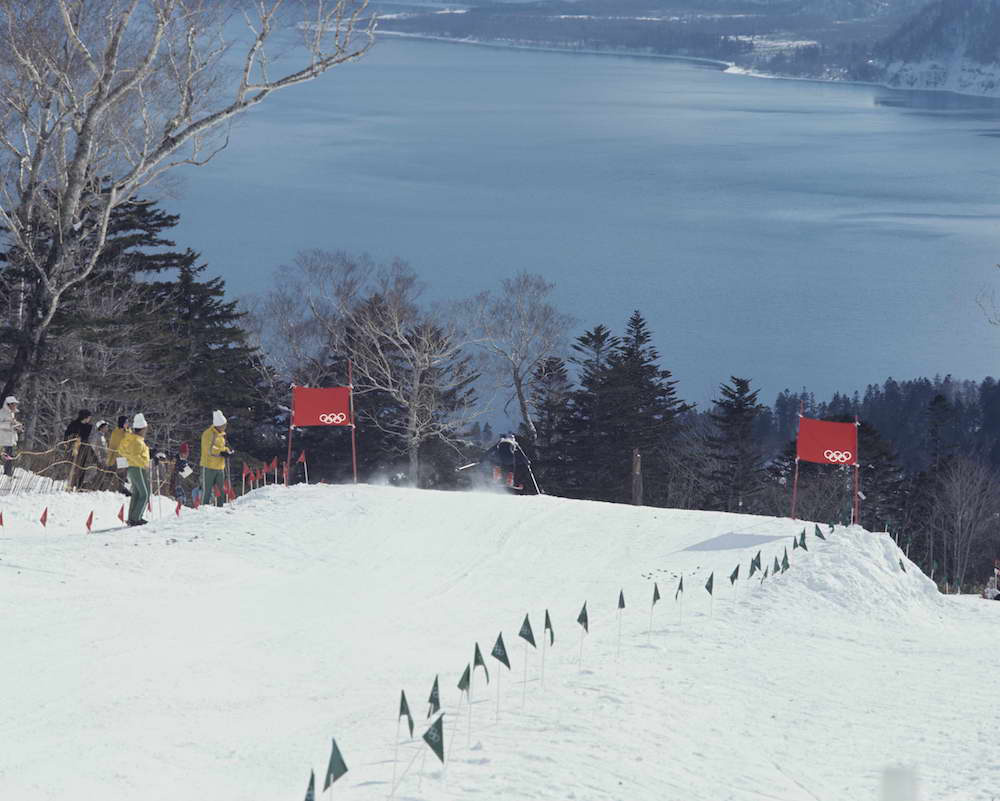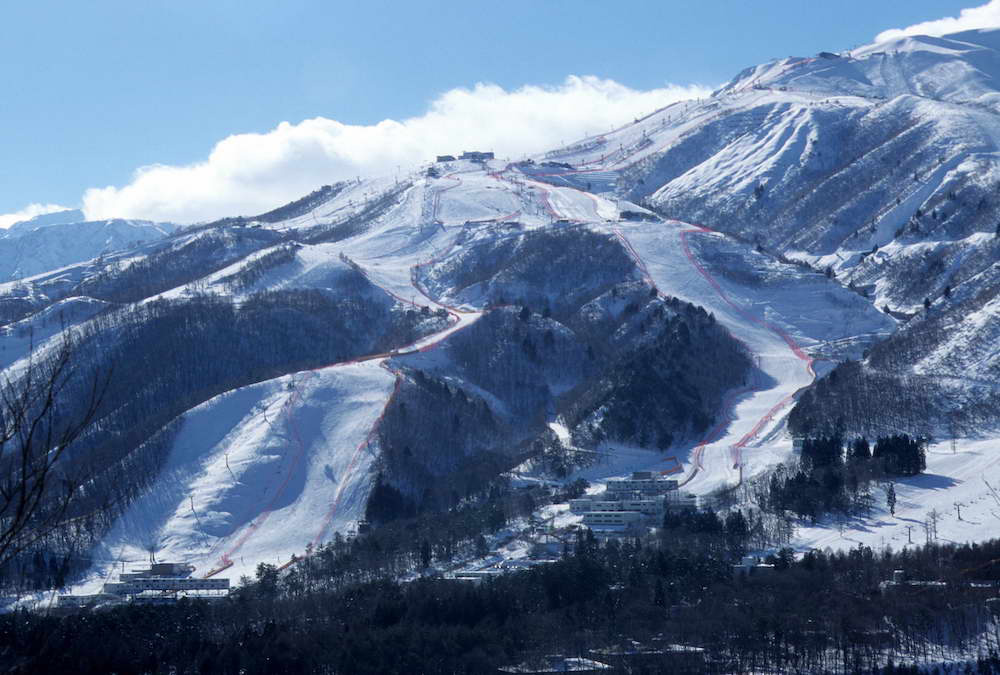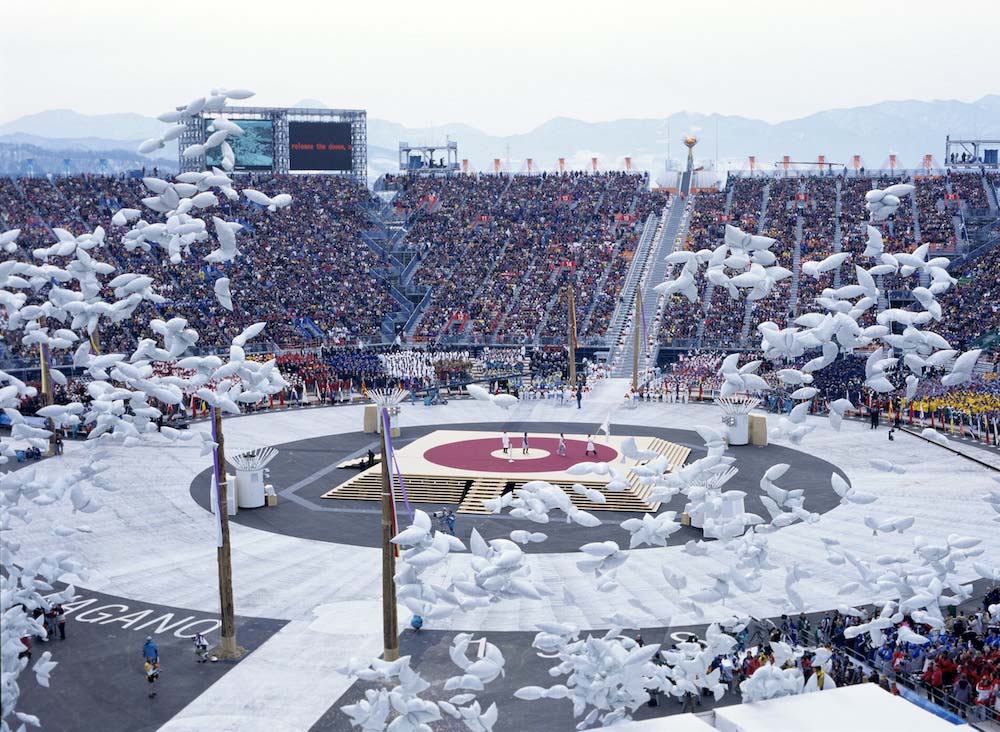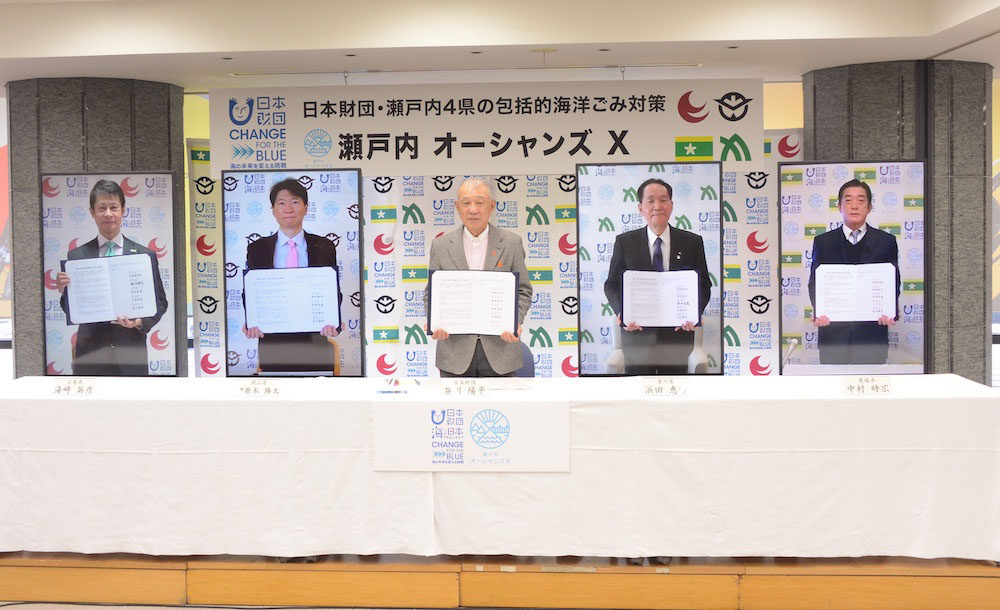The ‘Olympic X Environment’ that Started in JapanFrom Sapporo to Nagano to the Seto Inland Sea
Mount Eniwa is a volcanic mountain directly south of the city of Sapporo in Hokkaido, with a peak elevation of 1,320 meters. Overlooking Sapporo from its summit, the mountain attracted the world’s attention in 1972 when Sapporo hosted the Winter Olympics, the first time the Winter Games were held in Asia. As the initially planned Mount Teine did not have a sufficient vertical drop for holding the alpine skiing events, the decision was made to move these events to Mount Eniwa.

As soon as the announcement was made, the Hokkaido Nature Conservation Society voiced opposition on environmental protection grounds, and after repeated discussions with organizers, the government approved the construction on the condition that after the Games concluded, the facilities would be removed and trees planted to restore the site to its original condition. The course was built at a cost of 800 million yen, with an additional 300 million yen spent on the site’s restoration. This marked the Olympic movement’s first environmental protection measure, which should be a source of pride for Sapporo, but the restoration was criticized because the organizers were unable to obtain the Yezo spruce trees that had previously grown there, and instead planted inferior varieties, meaning that the site was not fully restored.
Environmental preservation efforts launched in 1972
The United Nations Conference on the Human Environment, which was held in Stockholm and established the United Nations Environment Programme (UNEP), was also held in 1972. This was also the year the Club of Rome, a private think tank, published “The Limits to Growth,” a report using computer projections that claimed that if the population and environmental trends being seen at the time continued, they would pose limits to human growth within 100 years.
This growing awareness of environmental issues led to a more apprehensive view of the Olympics, and in particular the Winter Games, which require facilities that need to be built in natural environments. The city of Denver in the United States, which had been awarded the 1976 Winter Olympics, withdrew as host city in 1972 in response to local opposition, and after Canada also declined, the Games were held in Innsbruck, Austria, despite having just been held there in 1964.
The 1980 Lake Placid Games in the United States were built with long-term use in mind, but temporary facilities were used as well. This was also the first time the International Olympic Committee (IOC) conducted a study of the Games’ environmental impact. At the 1988 Calgary Games in Canada, facilities were built in accordance with revisions proposed by environmental groups. In this sense, we can say that Sapporo paved the way to environmental issues being included in Olympic planning.
The 1990s and the Nagano Games
In response to criticism from environmental groups, IOC President Juan Antonio Samaranch announced in 1990 that environmental protection would become the third dimension of the Olympic movement, in addition to “sport and culture.” The 1992 Summer Olympics were held in Barcelona, Spain, roughly one month after the United Nations Conference on Environment and Development (UNCED; the “Earth Summit”) took place in Rio de Janeiro, Brazil. In Barcelona, the Olympic committees of all participating countries and regions signed an “Earth Pledge.” At the Centennial Olympic Congress, held in Paris in 1994 to mark the 100th anniversary of the IOC’s founding, the protection of the environment was added to the Olympic Charter as an essential component of Olympism, and the 1994 Winter Games, held in Lillehammer, Norway, were positioned as the first “green” Olympics.

In 1998, the Winter Olympics returned to Japan, being held in Nagano under an organizing vision of “coexistence with nature.” These were the first Games to be held after the IOC added environmental protection to the Olympic Charter, and also the first to be held after the signing of the Kyoto Protocol, which committed countries to reducing their greenhouse gas emissions. There were problems from the outset, however. The originally planned alpine skiing venue had to be abandoned because of opposition from environmental groups, and even after a new site was finalized, there was disagreement over the course’s starting point that was not resolved until two months before the Games began. The biathlon course also had to be moved after nests of goshawks, designated a scarce species at the time, were discovered on the originally proposed course. Other environmental considerations included the laying of tatami mats underneath the cross-country skiing course instead of using chemicals to maintain the snow’s condition, the flying of biodegradable dove balloons instead of releasing live doves at the Opening Ceremony, and the use of paper tableware made using the pulp of apples, one of Nagano’s main agricultural products. Seedlings were also planted to regenerate the forests where facilities had been built, but with full attention given to restoring the sites to their original condition to avoid a reoccurrence of the situation in Sapporo 26 years earlier.

Setouchi Oceans X project
The Nippon Foundation launched the Setouchi Oceans X project in December 2020 as part of the Change for the Blue project. The Seto Inland Sea is bordered by Japan’s main island, Honshu, and the islands of Kyushu and Shikoku, and the fact that it is semi-enclosed means there is little inflow of outside ocean debris. This makes it possible to evaluate the effectiveness of various measures to reduce ocean debris while also raising awareness of the issue among local residents. The project is being carried out in cooperation with the governments of four of the surrounding prefectures, as well as companies, universities and research institutes. By applying the findings of the surveys, research, and analysis conducted in this environment to the reduction of ocean debris around the world, the project aims to play a role similar to that of Sapporo in introducing environmental issues to the Olympic movement and Nagano’s major advances in addressing them.

Contact
Public Relations Team
The Nippon Foundation
- Email: cc@ps.nippon-foundation.or.jp



